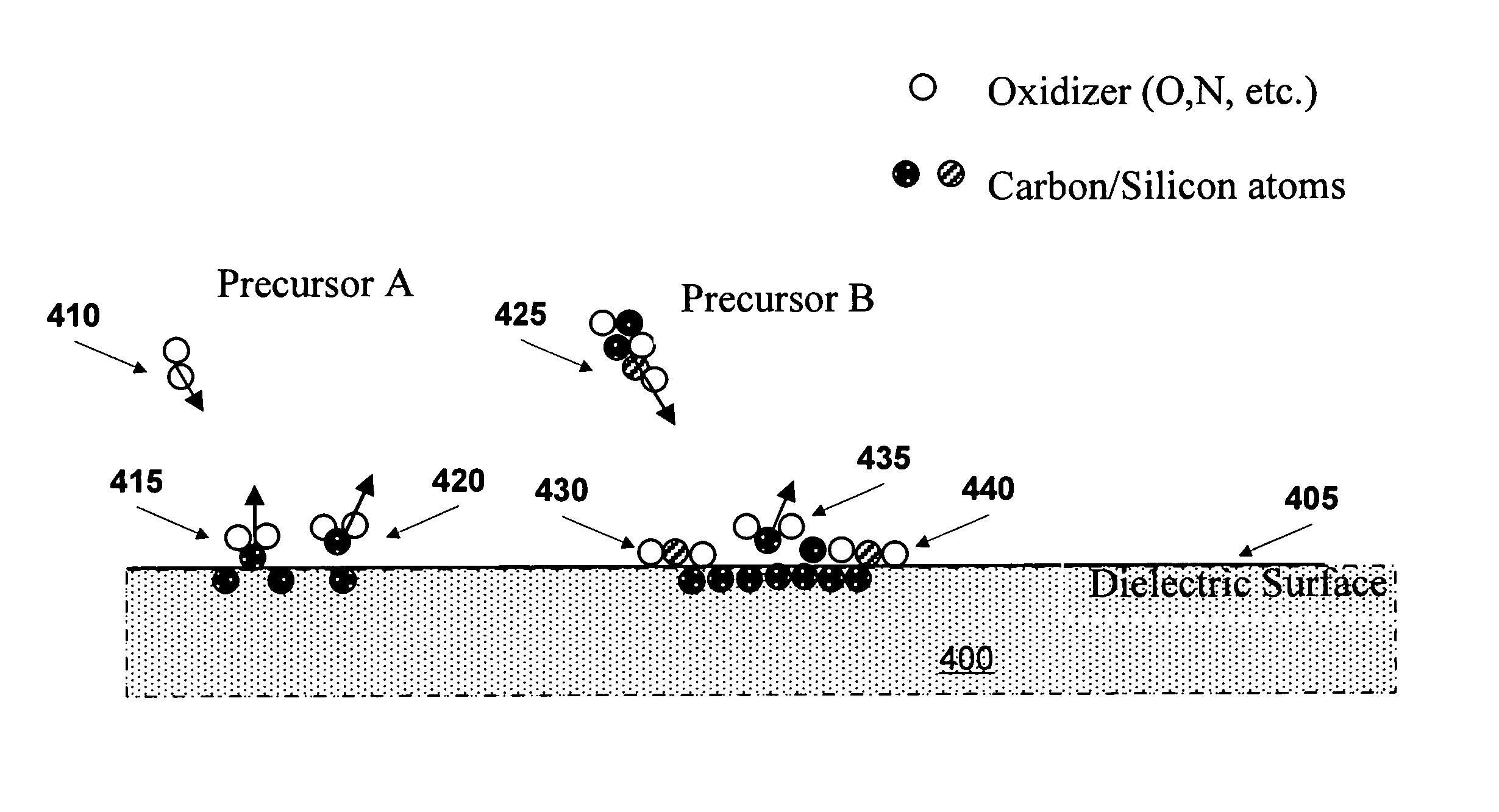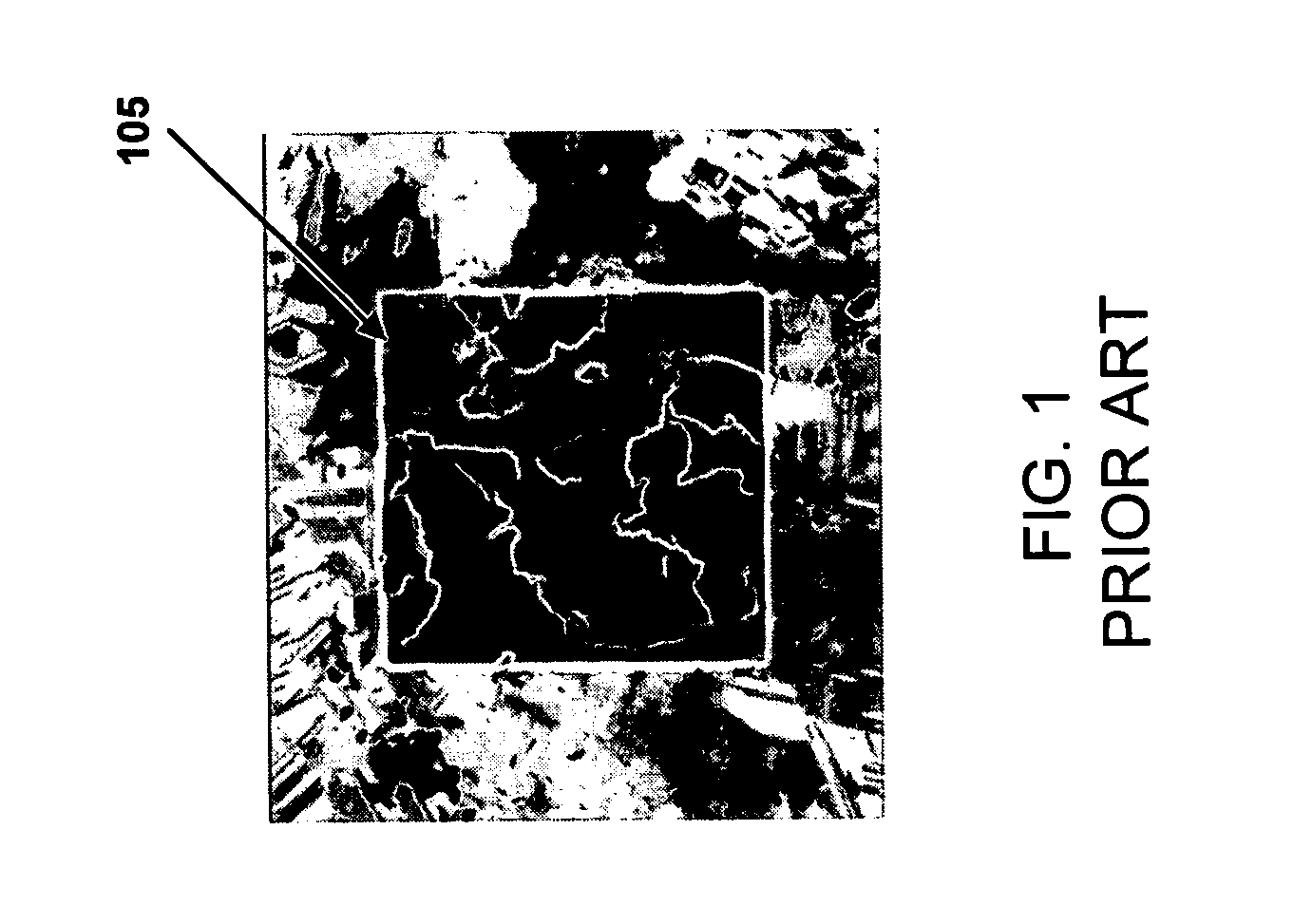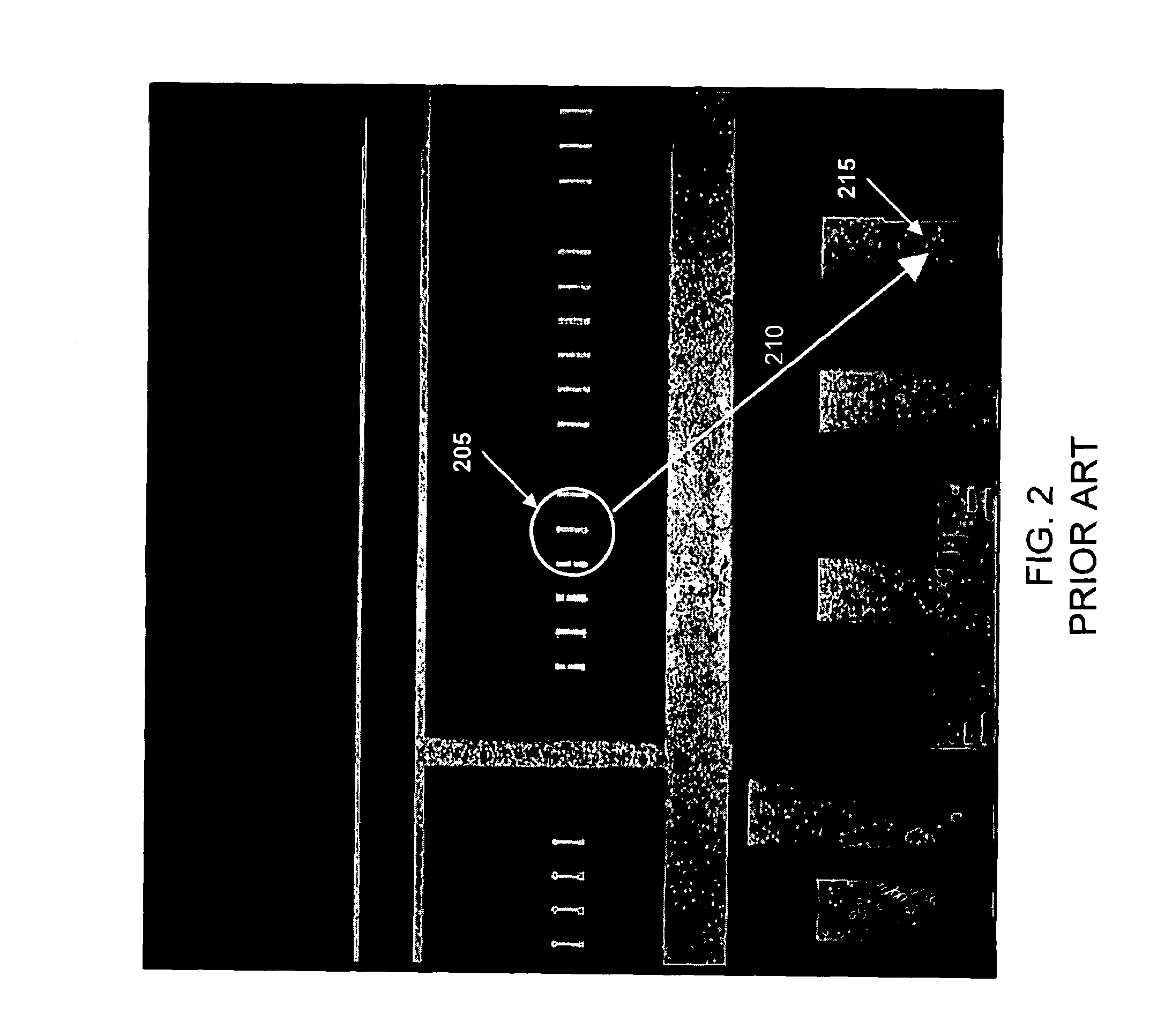FIB milling of copper over organic dielectrics
a technology of organic dielectrics and milling copper, which is applied in the field of milling copper with a focused ion beam, can solve the problems of halogen-containing compounds that are not suitable for fib milling of copper metallizations, significant damage to the underlying dielectric in exposed areas, and inability to remove residual copper, etc., to achieve the effect of improving the removal rate, high sticking coefficient and long residence tim
- Summary
- Abstract
- Description
- Claims
- Application Information
AI Technical Summary
Benefits of technology
Problems solved by technology
Method used
Image
Examples
examples
[0061]FIG. 5 is a micrograph of an unsuccessful attempt to mill copper using prior-art NH4OH as a precursor to enhance milling. Top metal layer 505 was embedded in SiO2 dielectric 510 and was successfully milled using the NH4OH precursor. An attempt to use the same regime for milling of a further copper layer 515 over organic dielectric 520 (Black Diamond™, Applied Materials Inc.) was unsuccessful as it led to unwanted exposure of a deeper metal layer 525.
[0062]FIG. 6 is a micrograph showing the same structure as in FIG. 5, but in which copper was successfully milled using Nitroethanol as precursor in accordance with an embodiment of the invention. In this example, pressure in the chamber was 1–2×10−5 Torr and the ion-beam-current density was 4 pA / μm2. As in the structure of FIG. 5, top metal layer 605 was embedded in SiO2 dielectric 610 and was successfully milled using a prior-arat process. Further copper layer 615 over organic dielectric 620 (Black Diamond™, Applied Materials Inc...
PUM
| Property | Measurement | Unit |
|---|---|---|
| vapor pressure | aaaaa | aaaaa |
| vapor pressure | aaaaa | aaaaa |
| pressure | aaaaa | aaaaa |
Abstract
Description
Claims
Application Information
 Login to View More
Login to View More - R&D
- Intellectual Property
- Life Sciences
- Materials
- Tech Scout
- Unparalleled Data Quality
- Higher Quality Content
- 60% Fewer Hallucinations
Browse by: Latest US Patents, China's latest patents, Technical Efficacy Thesaurus, Application Domain, Technology Topic, Popular Technical Reports.
© 2025 PatSnap. All rights reserved.Legal|Privacy policy|Modern Slavery Act Transparency Statement|Sitemap|About US| Contact US: help@patsnap.com



